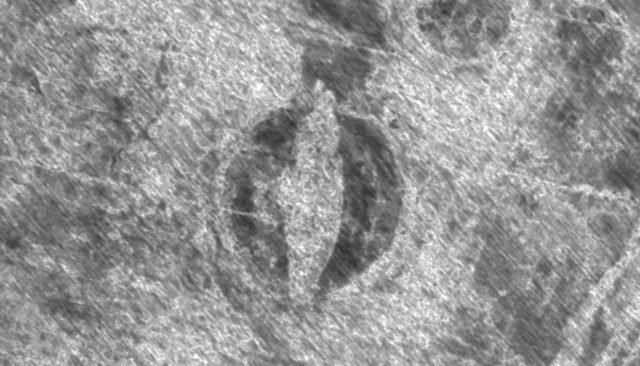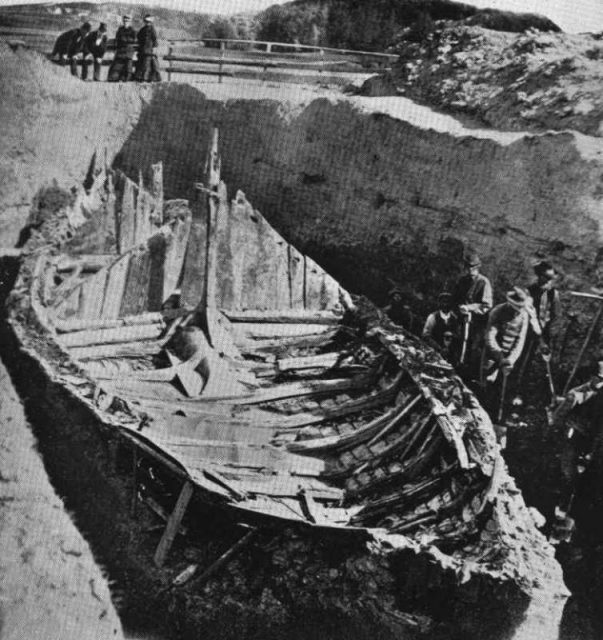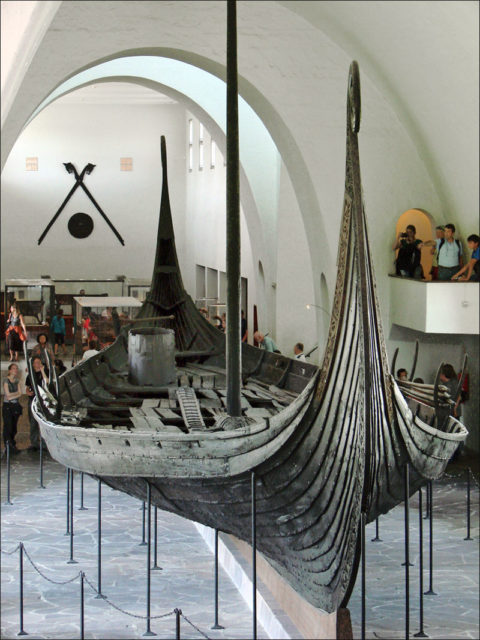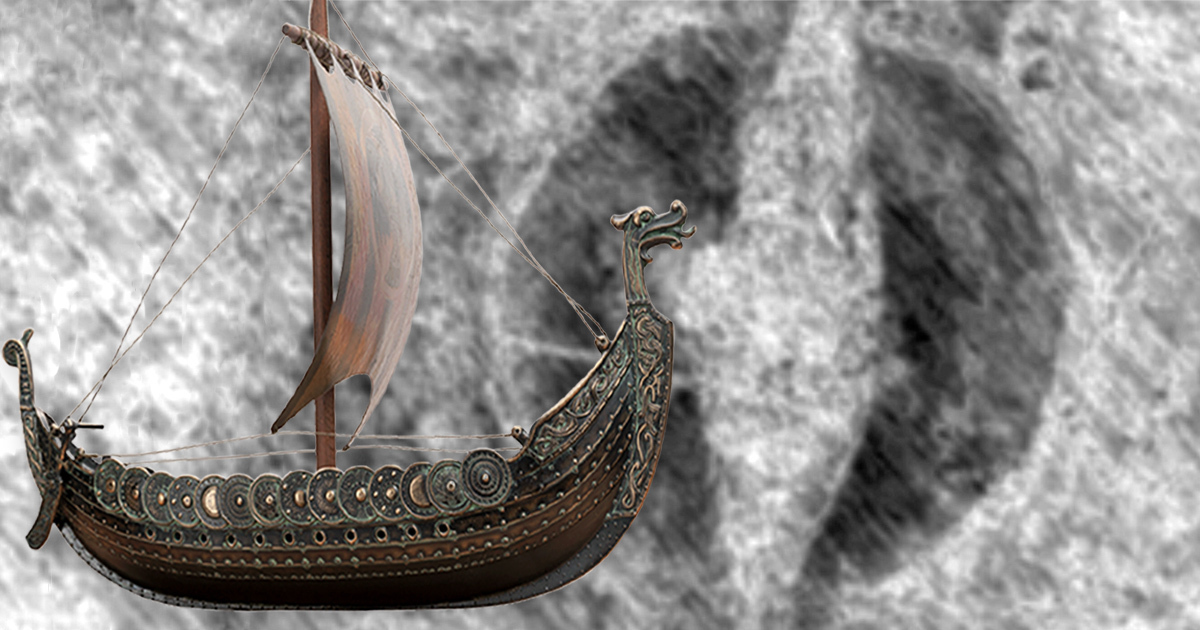Archaeologists in Norway have begun to excavate a viking ship from underground, making it the first time they have undertaken such a mission in a century. In 2018, the Norwegian Institute for Cultural Heritage Research (NIKU) used ground-penetrating radar to discover the location of several longhouses and at least one Viking ship, known as the Gjellestad ship.
Now, that ship is being excavated from the ground where it has buried for so long. The ship is around 66 feet long and was near the surface of burial mound, only about 1.6 feet below ground, according to a recent report from Fox News.
Knut Paasche, NIKU department head and an expert on such ships, made a statement about the coming excavation, saying that the ship is in poor condition and some of its timbers had rotted away, and this was the organization’s chance to get what information could be gleaned from the find. Not long after its discovery, archaeologists estimated that the ship probably dates from the early part of the Viking era. Although the remains of many ships have been discovered over the years, only a few from the earliest part of the Viking era have been well preserved. The Oseberg ship, one of those few, was discovered a hundred years ago.

The Museum of Cultural History at the University of Oslo is taking point on an excavation that is planned to last five months. Paasche says that the excavation will be exciting to people ranging from archaeologists to citizens who have a casual interest in their history and heritage. Explorations that are more recent have confirmed that the ship is as old as the preliminary assessments suggested.
Unfortunately, besides some of the timber having rotted, parts of the ship have also suffered from severe fungi growth, probably the result of fertilizer being spread over the area. The soil conditions and the damage already inflicted on the ancient ship are what prompted the dig.

Since the Viking ship in Norway is no longer intact, the museum described the excavation at being a bit like doing a jigsaw puzzle; they are progressing bit by bit. So far they have been removing the topsoil with an excavator and sifting to find fragments of the ship. Once the soil has all been sifted for fragments, they will eventually dig up first the southern half, and then the northern half of the remains and the mid-ship, which they believe holds a grave chamber.

There have been other interesting Viking finds in recent years, as well. Last year, for example, an unusual double Viking boat burial was discovered. In that case, archaeologists first found the boat grave of a woman from the ninth century, which contained various pieces of jewelry, scissors, and a spindle among other artifacts. Then they realized that rather than digging her own hole, she was buried in another, larger boat grave that had been buried about a century earlier. The older grave belonged to a man who was buried with his shield, a spear, and a sword.
Late in the 19th century, the grave of a warrior was discovered in Sweden. The warrior was always believed to be male. In 2017, DNA analysis showed that the body actually belonged to a woman. Despite her gender, she was clearly not only a warrior, but also one of high status who had been buried with the tools of her craft. Her grave contained twenty-five arrows designed to pierce armor, spears, a sword, and two lances. Two horses were also buried with her, showing her high status.
Related Article: Unsuspecting Farmer Finds out Huge Viking Ship is Buried Under his Farm
Other fairly recent discoveries of Viking artifacts in Scandinavia include a ‘Thor’s Hammer’ in Iceland and a 1,500-year-old sword in a Swedish lake in 2018, as well as a treasure trove of silver that was linked to a Viking ruler on a small island in the Baltic Sea.
A Viking hoard was even discovered in Scotland in 2014. Known as the ‘Galloway Hoard,’ it’s become known as the richest depository of Viking artifacts ever found in the British Isles.
Each new discovery offers not only a sense of wonder, but also a bit more insight into a culture that has fascinated people all over Europe and North America.
